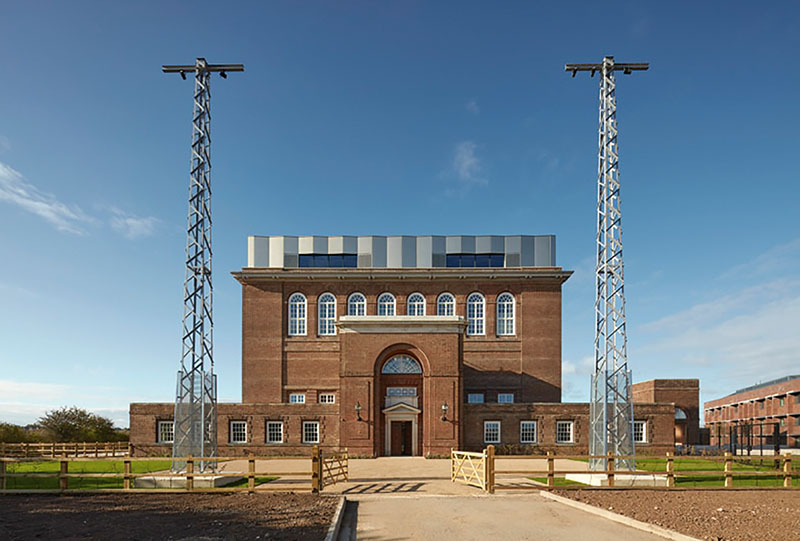How urban mining can help reach net-zero goals
 When considering the heritage buildings of the future, the carbon footprint not only of the buildings in operation, but also the process of construction and the building’s life span – from design, through construction to demolition. An innovative, circular approach is emerging that has the potential to reduce the environmental impact of construction significantly: urban mining. Here, traditional brickmakers Michelmersh explain the process and its advantages.
When considering the heritage buildings of the future, the carbon footprint not only of the buildings in operation, but also the process of construction and the building’s life span – from design, through construction to demolition. An innovative, circular approach is emerging that has the potential to reduce the environmental impact of construction significantly: urban mining. Here, traditional brickmakers Michelmersh explain the process and its advantages.
Urban mining is the practice of reclaiming and recycling waste materials from unused, manufactured objects and structures. In construction, it primarily relates to the dismantling or strategic demolition of buildings. Materials such as concrete, clay bricks, steel and copper are ‘mined’ from sites that are unusable in their current state.
They are then either:
Recycled – broken down into composite materials to incorporate into new building products.
Reused – reclaimed in their whole form, then reused. That is only possible if the dismantling doesn’t damage the building products.
Urban mining is not yet a widespread practice in the construction industry. That is due, in part, to the specific skillset required to recover materials efficiently. However, feasibility studies in Singapore have found that mining skills develop quickly if workers repeatedly recover the same materials.
What are the benefits of urban mining?
The built environment is estimated to contribute 25% of the UK’s total greenhouse gas emissions. That makes construction companies key players in 2030 net-zero goals. Urban mining is an emerging circular practice in the construction industry that can help the UK lower its carbon emissions in several ways.
Reducing manufacturing emissions – Scope 3 emissions describe companies’ carbon emissions that are not the result of operating assets they own or control. Those could be investment in manufacturing equipment, leased office space or external haulage activities. Scope 3 emissions occur upstream in the value stream, with suppliers, or downstream, with logistics and end users. In construction, they include energy usage and waste produced in building product manufacturing processes. By using urban mined materials, designers and developers reduce the carbon emissions of their projects.
Reducing waste and reliance on raw materials – when you factor in demolition, the construction industry produces a third of the world’s waste. That adds to landfill and the use of incinerators, which contribute over 100 million tonnes of CO2 emissions in Europe each year. Moreover, mining and processing raw materials such as limestone, timber, clay and iron requires significant energy use. Urban mining prevents waste from going to landfills and incineration and reduces the need to mine more raw materials. That minimises waste and energy consumption for production.
Clearing underutilised structures
Retaining green space is vital for meeting net-zero goals. That is because untouched areas of vegetation and woodland absorb carbon and improve biodiversity. So it follows that the best land to use for new buildings is that currently occupied by underutilised structures. Urban mining incentivises owners of those structures to clear sites for new structures. That’s because the commercial value of reclaimed materials helps offset demolition costs. As such, more urban land can be freed up to reduce the need for city or town footprints to expand into green space.
Think longer
Urban mining is still a small-scale practice in construction. As such, the open market for urban mined building products is currently geared towards domestic projects. Case studies such as Houlton School and No 76 Southbank show that it is possible to scale up the approach.
The projects ranged from 130,000 to over 300,000 sq ft of gross internal area and used materials that had been urban mined from their original structures. Where needed, new materials were carefully selected to match the existing materials’ aesthetics, quality and sustainability. At Houlton School (pictured), that included handmade clay bricks produced by Michelmersh.
Taking inspiration from the longevity of the reclaimed materials in those case studies, we can also think longer when we design buildings today. Clay bricks extend a building’s lifespan, which reduces its carbon footprint. They can also last over 200 years, improving the reclaim opportunities for future generations.
• To discover more of the sustainable benefits of clay bricks, as well as Michelmersh’s investment in more sustainable practices, visit sustainablebrick.com.













